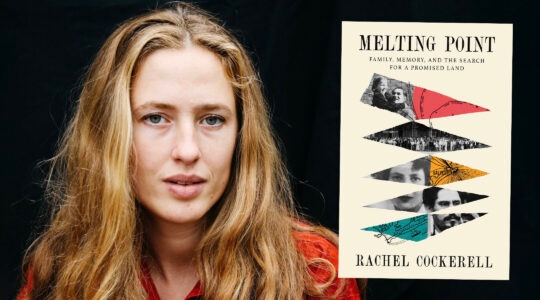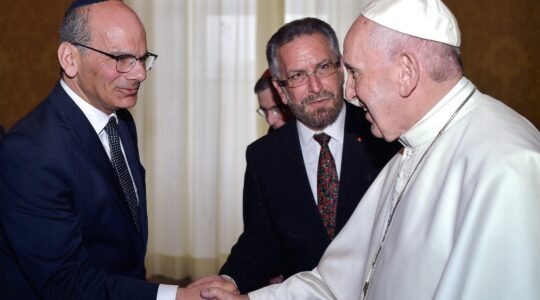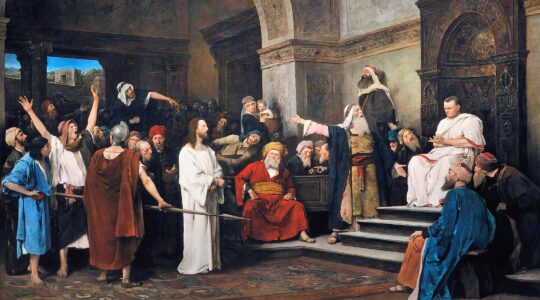‘Where are you going for seder?” “How many people are you having for seder?”
How often have we heard those words? And it’s no accident, that. But why limit ourselves to asking about who is coming in person? Why not ask who you wish could be at your seder this year, even if that is not physically possible?
Whose presence are you hungry for — be it at the seder table or in your life generally? A relative who cannot be with you? A friend with whom you have lost touch? Perhaps a character from history whose presence would add meaning to your conversation about freedom and redemption? Set a place for them, open your heart to them and let them in.
Sounds a little goofy, right? I know. I’m not even a fan of Harry Potter or “The Hunger Games,” let alone time travel or the spirit world, but nothing could be more traditional or meaningful, especially on Pesach.
Inviting guests to our tables, or being guests of others at theirs, is a custom as old as Passover itself. From the biblical invitation to come together to share the Paschal lamb (Exodus 12:3-4), to the rabbinic tradition of opening the seder by inviting all who are hungry to come and eat, hosting, being a guest and the bonding they create, have played a central role in the oldest of Jewish holidays.
But it’s not only about bonding as hosts and guests. The tradition of inviting guests is about more than inviting people to share our food. As in the movie “Guess Who’s Coming to Dinner,” it’s about opening hearts and minds in ways that create new meaning, and unleash new possibilities.
On Shavuot, we celebrate not only the giving of the Torah, but the fact that we were all there together. We celebrate that possibility of standing close and feeling connected to all those who have gone before us and all those yet to come.
On Sukkot, we not only re-enact our ancestors’ living conditions, but actually invite them — at least some of the more famous ones — into our Sukkot. The tradition of ushpizin (symbolically welcoming seven biblical heroes) brings heroic figures close, and it need not be limited to one set of heroes. It is already common in some places to add ushpizot — heroic women — and once we are expanding, why not expand further?
On Pesach especially, imagining that we cross time and space, creating connections spiritually and psychologically that we cannot enjoy physically is actually a central feature of the holiday.
The seder invites us to go back in time and see ourselves as those leaving Egypt. But why not also bring the past to life and invite those who have left us, or those whom we have left behind in our lives, to join in our celebration? They can still be with us, so why not have them join the seder? It’s so traditional.
For many people, the seder is the largest gathering in their homes all year, and we already set the table with a cup of Elijah and, in more recent years and in many homes, of Miriam. So, set an extra place at the table, and invite a person of your choice to join your seder, even if they cannot be there in person.
As with the other biblical festivals, the celebration offers the chance to come together, to make connections, to bridge gaps and heal hurts. It’s about building empathy, for those who are hungry and need to eat, for our ancestors who were oppressed and for ourselves — for our need of people we wish were closer. But wishing is not a strategy. As with so much of the seder, as it is with life, we must act upon our wishes.
This year, invite each person at the seder to continue the tradition of welcoming guests to the table. Give everybody the opportunity to share the name of someone who they wished was sitting alongside them. What question might you ask them? What would you love to hear them say? What memory or story would you share with them? What could they teach you about Passover, about the meaning of freedom, or about life?
Will they really be there? Will they really answer? I don’t know. I guess that depends. Are we really seeing ourselves as slaves leaving Egypt? Of course, the answer to all of these questions is no … and yes. Invite them and see. n
Rabbi Brad Hirschfield is the president of Clal-The National Jewish Center for Learning and Leadership, and the author of You Don’t Have to Be Wrong for Me to Be Right.
The New York Jewish Week brings you the stories behind the headlines, keeping you connected to Jewish life in New York. Help sustain the reporting you trust by donating today.




